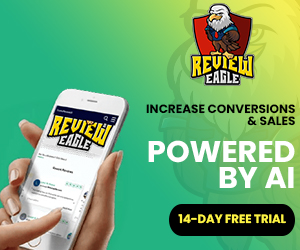The blog dives into the transformative world of social media advertising, where businesses can connect with billions globally on platforms like Facebook, Instagram, Twitter, and LinkedIn. This blog explores the unique opportunity social media ads present, allowing businesses to target specific demographics, interests, and behaviors, ensuring that their message reaches the right audience at the most opportune time. It emphasizes the power of social media ads in increasing brand awareness, driving traffic, generating leads, and boosting sales, all while highlighting the importance of understanding each platform’s nuances and tailoring strategies for maximum effectiveness. This comprehensive guide aims to equip businesses with the knowledge and tools to harness the full potential of social media ads, transforming their digital marketing efforts and achieving unparalleled engagement and growth.
Understanding the Power of Social Media Ads
Social media has become an integral part of our daily lives, with billions of people around the world using platforms like Facebook, Instagram, Twitter, and LinkedIn to connect with friends, family, and brands. This immense user base presents a unique opportunity for businesses to reach their target audience through social media ads.
Social media ads offer a powerful way to promote your products or services directly to the people who are most likely to be interested in them. Unlike traditional advertising methods, social media ads allow you to target specific demographics, interests, and behaviors, ensuring that your message reaches the right people at the right time.
By leveraging social media ads effectively, you can increase brand awareness, drive website traffic, generate leads, and even boost sales. The key is understanding how each platform works and tailoring your ad strategy accordingly.
Choosing the Right Social Media Platform for Your Ads
With so many social media platforms available today, it’s essential to choose the ones that align with your business goals and target audience. Each platform has its own unique features and user base, so it’s crucial to do your research before investing in social media ads.
Facebook is one of the most popular platforms for advertising due to its massive user base and advanced targeting options. It allows you to create highly targeted campaigns based on demographics, interests, behaviors, and even life events.
Instagram is another powerful platform for visual-based advertising. With its focus on images and videos, it’s an excellent choice for businesses in industries such as fashion, beauty, travel, food, and lifestyle.
If you’re targeting professionals or B2B customers, LinkedIn offers a range of advertising options tailored specifically for this audience. It allows you to target users based on their job title, industry, company size, and more.
Twitter is known for its real-time conversations and trending topics. It’s a great platform for businesses looking to engage with their audience through timely and relevant content.
By understanding the strengths and weaknesses of each platform, you can choose the ones that best align with your business objectives and target audience.
Defining Your Target Audience for Maximum Impact
Before diving into creating your social media ads, it’s crucial to define your target audience. Understanding who your ideal customers are will help you tailor your messaging and visuals to resonate with them on a deeper level.
Start by conducting market research to identify key demographics, interests, behaviors, and pain points of your target audience. This information will guide you in creating highly targeted ads that speak directly to their needs and desires.
Consider creating buyer personas that represent different segments of your target audience. These personas should include details such as age, gender, location, occupation, hobbies, challenges they face, and goals they want to achieve. Having a clear picture of who you’re targeting will make it easier to craft compelling ad copy and visuals that resonate with them.
Crafting Compelling Ad Copy that Converts
The success of your social media ads relies heavily on the quality of your ad copy. It’s essential to create compelling headlines and concise yet persuasive descriptions that capture the attention of your target audience.
Start by clearly communicating the value proposition of your product or service. What problem does it solve? How does it benefit the customer? Highlighting these key points will grab the reader’s attention and make them want to learn more.
Avoid using jargon or complex language in your ad copy. Keep it simple and easy to understand so that even someone who is unfamiliar with your industry can grasp the message quickly.
Use strong calls-to-action (CTAs) to encourage users to take the desired action, whether it’s visiting your website, making a purchase, or signing up for a newsletter. Phrases like “Shop Now,” “Learn More,” or “Get Started” can be highly effective in driving conversions.
Lastly, don’t forget to include relevant keywords in your ad copy. This will help improve the visibility of your ads and ensure they appear in relevant search results.
Designing Eye-Catching Visuals for Your Ads
In addition to compelling ad copy, eye-catching visuals are essential for grabbing the attention of social media users who are constantly scrolling through their feeds.
Invest in high-quality images or videos that showcase your product or service in the best possible light. Use vibrant colors and visually appealing compositions to make your ads stand out from the competition.
If you’re not a graphic designer, don’t worry! There are plenty of user-friendly design tools available that allow you to create professional-looking visuals without any design experience. Canva and Adobe Spark are two popular options that offer pre-designed templates and drag-and-drop functionality.
Remember to keep your visuals consistent with your brand identity. Use fonts, colors, and imagery that align with your brand’s personality and values. Consistency across all marketing materials will help build brand recognition and trust among your target audience.
Leveraging Data and Analytics for Continuous Optimization
Social media advertising is not a set-it-and-forget-it strategy. To achieve maximum impact, it’s crucial to continuously monitor and optimize your ad campaigns based on data and analytics.
Most social media platforms provide robust analytics tools that allow you to track key metrics such as impressions, clicks, conversions, and engagement. Use these insights to identify what’s working and what’s not, and make data-driven decisions to improve your ad performance.
Pay attention to metrics like click-through rates (CTR), conversion rates, and return on ad spend (ROAS). These metrics will give you a clear picture of how well your ads are performing and help you identify areas for improvement.
Experiment with different ad formats, targeting options, and messaging to see what resonates best with your target audience. A/B testing can be a powerful tool in optimizing your ads for maximum impact.
Implementing A/B Testing to Maximize Results
A/B testing involves creating multiple versions of an ad and testing them against each other to determine which one performs better. This allows you to make data-driven decisions and optimize your ads for maximum impact.
When conducting A/B tests, focus on one variable at a time. For example, test different headlines or images while keeping the rest of the ad elements constant. This will help you pinpoint the specific element that has the most significant impact on your ad’s performance.
Run your A/B tests for a sufficient period to gather statistically significant data. Depending on the size of your audience and budget, this could range from a few days to several weeks.
Once you have enough data, analyze the results and determine which version of the ad performed better. Use these insights to refine your future campaigns and continuously improve your social media ads’ effectiveness.
Setting a Budget and Allocating Ad Spend Wisely
When it comes to social media advertising, budgeting is an essential aspect of maximizing impact. It’s crucial to set a realistic budget based on your business goals and allocate it wisely across different platforms and campaigns.
Start by determining your overall advertising budget. Consider factors such as your business size, industry, competition, and desired outcomes. It’s also important to keep in mind that social media ads are typically billed on a cost-per-click (CPC) or cost-per-impression (CPM) basis.
Once you have your budget, allocate it across different platforms based on their effectiveness and relevance to your target audience. Monitor the performance of each platform and adjust your budget allocation accordingly.
Remember that social media advertising is an ongoing process, so it’s essential to regularly review and adjust your budget based on the results you’re achieving. Be prepared to reallocate funds from underperforming campaigns to those that are generating the best results.
Monitoring and Measuring Success with Key Metrics
To gauge the success of your social media ad campaigns, it’s crucial to monitor key metrics that align with your business goals.
Some common metrics to track include impressions (the number of times your ad was displayed), reach (the number of unique users who saw your ad), clicks (the number of times users clicked on your ad), conversions (the number of desired actions taken as a result of seeing the ad), and engagement (likes, comments, shares).
These metrics will help you understand how well your ads are performing and whether they’re achieving the desired outcomes. Use this data to make informed decisions about optimizing future campaigns and improving overall performance.
Conclusion: Unleash Your Brand’s Full Potential with Social Media Ads
Social media ads have become an indispensable tool for businesses looking to make a lasting impact on their target audience. By understanding the power of social media ads and implementing proven strategies, you can skyrocket your brand’s visibility, drive conversions, and unlock its full potential.
In this blog post, we explored the various aspects of social media advertising, from choosing the right platform to defining your target audience, crafting compelling ad copy, designing eye-catching visuals, leveraging data and analytics, implementing A/B testing, setting a budget, and monitoring key metrics.
Remember that social media advertising is an ever-evolving landscape. Stay up to date with the latest trends and best practices to ensure your ads continue to deliver maximum impact. With the right approach and continuous optimization, you can take your advertising efforts to new heights and achieve remarkable results with social media ads.
The AI Web Agency is dedicated to helping our clients grow their business. Growth is the DNA and foundation of our focus in everything we provide to our clients. The AI Web Agency offers marketing services that make our client’s phones ring, their websites fill with visitors, and keeps their existing clients engaged. We deliver this growth both online and offline, to local businesses and national brands. We leverage the power of AI to provide precision personalized content delivered via Email, Web, and Social Media to help businesses grow.









